Tuesdays are a great day for diving in New Jersey. The weekends are tough. With gas prices the way that they are, everyone stays in close and trying to find a spot to dive can be tough. My wife, Ronnie and I and my dive buddy, Beth Dalzell and her husband, Wes, headed out in the early AM for the Sea Girt Artificial Reef. We wanted to dive on the Cranford, an old ferry boat. We had a few reasons to go there. First, we wanted blue mussels. We have harvested them there in the past and we hoped to get some today. I don’t eat mussels but I have some good friends that love to get them. Wes and Beth eat them and have plenty of friends that love food fresh from the sea. We departed early because Beth had to be in early for a class that she is taking. We were in the water at a little after 8:00 am. We reached the bottom and were treated to 30′ plus of visibility. In New Jersey, that is really nice. I was using a 28-80mm lens on my Nikon D200 and was hoping to find some cooperative subjects. The first thing that I noticed after the great visibility was a number of Lion’s mane jellyfish floating a few feet off the bottom. I noticed that sometimes the Lion’s mane would stop swimming and spread out its bell and just stay like that. It is a beautiful sight.
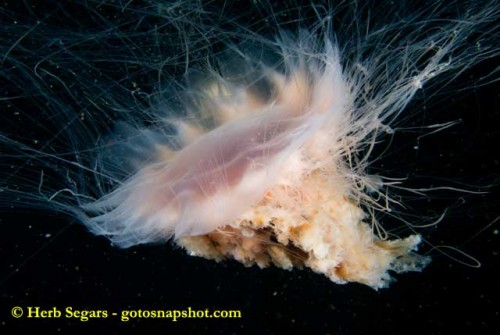
  During the course of my 48 minute dive at 68′, I managed to shoot about 240 photos. I think back to the days of film and remember that I would have had to stop at 36 exposures. Boy, do I love digital. I concentrated ton Lion’s mane jellyfish but also took the time to shoot a tautog (blackfish) as well as a sea raven and a few common sand dollars.
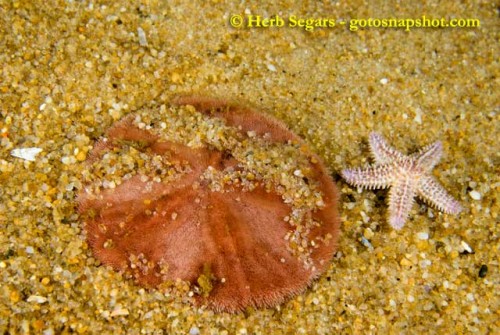
Beth has a point and shoot digital camera in an Ikelite housing and she was trying a Magic Filter to see if she could bring home some good shots. Beth does not have a flash so her results so far have not been great. I haven’t seen the results with the Magic Filter but I hope that it helped her with her photos. If you don’t know what a Magic Filter is, go to the digital photography section of my web site and you can find out all about it. Actually, I used it on my second dive today on the Cranford and I will tell you later how it worked.
Â
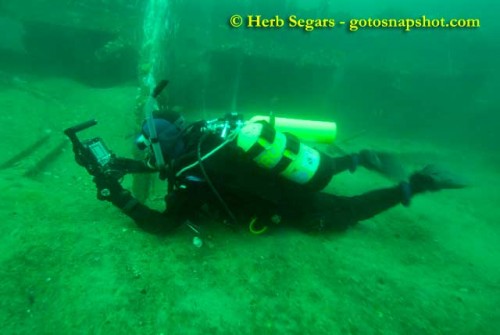
I had a great time on the first dive. I would shoot jellyfish and then roam around the wreck shooting other subjects and then it was back to jellyfish again. One of the challenges of shooting jellyfish in New Jersey is backscatter. This occurs when tiny particles in the water column reflect the light from my strobes and it shows up as pinpoints of light in my photos. To compensate for this, I try and use a very small lens opening (f18 or f20) and zoom my lens to the widest angle of its zoom (18mm – about 27mm on my 1.5x multiplies Nikon digital camera) and aim my two strobes (Ikelite DS-125’s) at the top and bottom of the jellyfish. Today, I got some great results. Sometimes, the water column has so much crap in it that I end up with so much backscatter that the photos are unuseable. I also want to point out that I love shooting jellyfish. I will often hang fifteen feet below the surface and shoot jellyfish for hours. This is the one area of digital photograpy that is harder than film. I used to shoot comb jellies and sea gooseberries with a Nikonos V camera with extension tubes and two small strobes. It was easy to do one handed and the most difficult part was getting the exposure correct. Using a digital SLR in a housing while holding onto an anchor line is tough and often, the digital SLR won’t focus on the semi-transparent comb jellies. Sometimes I will let go of the anchor line to take my photos and occassionally, I will end up floating away from the anchor line and have to make a long swim back to the boat and on rare occasions, the boat will have to come and get me. I try to limit the times I do this to when there is no surface current.
While I swam around, I came across a tautog (blackfish) just lying on the wreck and not moving. I thought that there was something wrong. There wasn’t as I saw a few more tautogs doing the same thing. I was able to get one shot off before the fish moved on. Tautogs are the hardest fish to photograph in New Jersey as they don’t let divers approach easily. They are always swimming away from my camera. Today I got lucky and got a good shot.
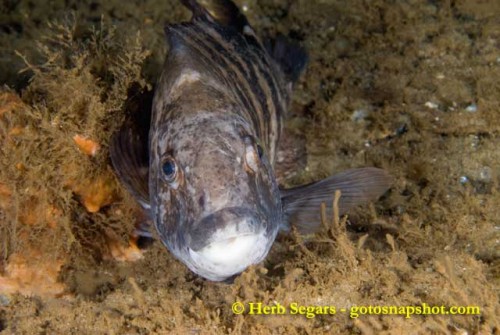
Between dives, I changed to a wide angle lens (Nikon 12-24mm), a Magic Filter (for green water) and no strobes. In order to use this filter, I have to take a custom white balance settting once I reach the bottom. The first thing that I noticed when I got to the bottom was that the visibility was about half of what it was on the first dive. I also realized that the light level was lower than I anticipated and  that the ISO setting that I was using (800) was not fast enough as I was getting shutter speeds of 1/8 of a second at f8. I didn’t want to open the lens up anymore than f8 because the Nikon 12-24mm gets soft with lens openings wider than f8. At one point, I pushed the ISO to 1000 and even in desparation, moved the lens opening to f7.1 and then to f5.6. I still was shooting at shutter speeds of 1/15 of a second. The problem with these shutter speeds is that the pictures tend to be soft, especially if there is any movement in the photo. I didn’t want to open up my lens opening too wide as the Nikon 12-24mm lens gets soft on the edges with lens openings larger than f8. I still managed to take a large number of photos and ended up with some that are useable. The jury is still out for using the Magic Filter in New Jersey. I will try it again on a sunny day with good visibility and will see if I can get better results. I will also probably try to up the ISO even higher. I know that I will have more noise in my photos but I would rather deal with noise on a photo that is in focus than ending up with photos that are too out of focus to use.
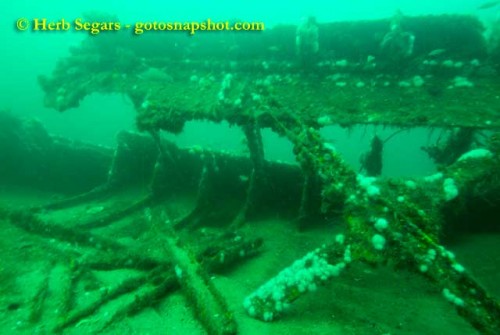
Overall, I was very happy with the day. The summer dive season goes by too fast in New Jersey. My dive buddy, Beth, will be back teaching school at the beginning of September so our diving days during the week will end.
© 2008, Herb Segars. All rights reserved.

